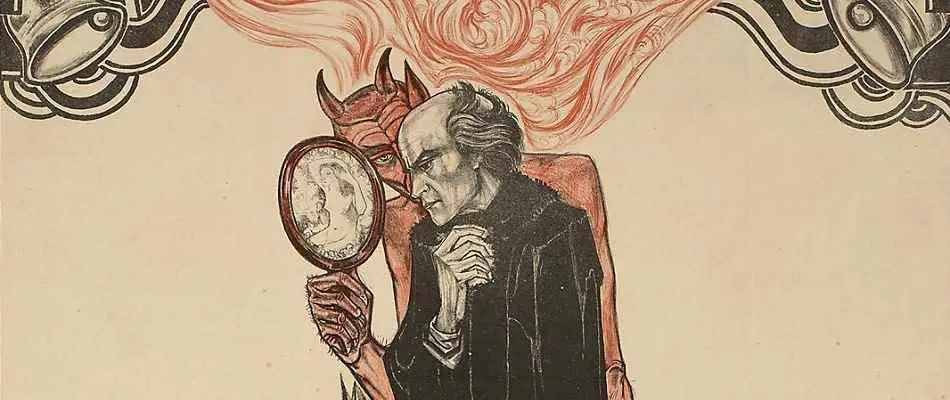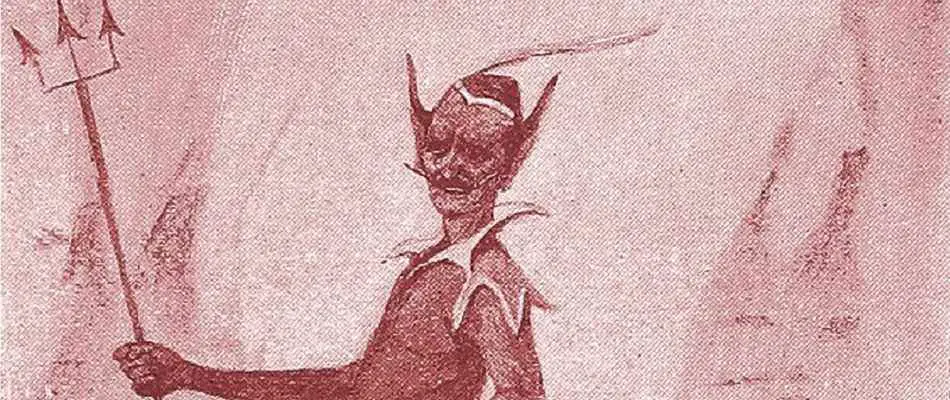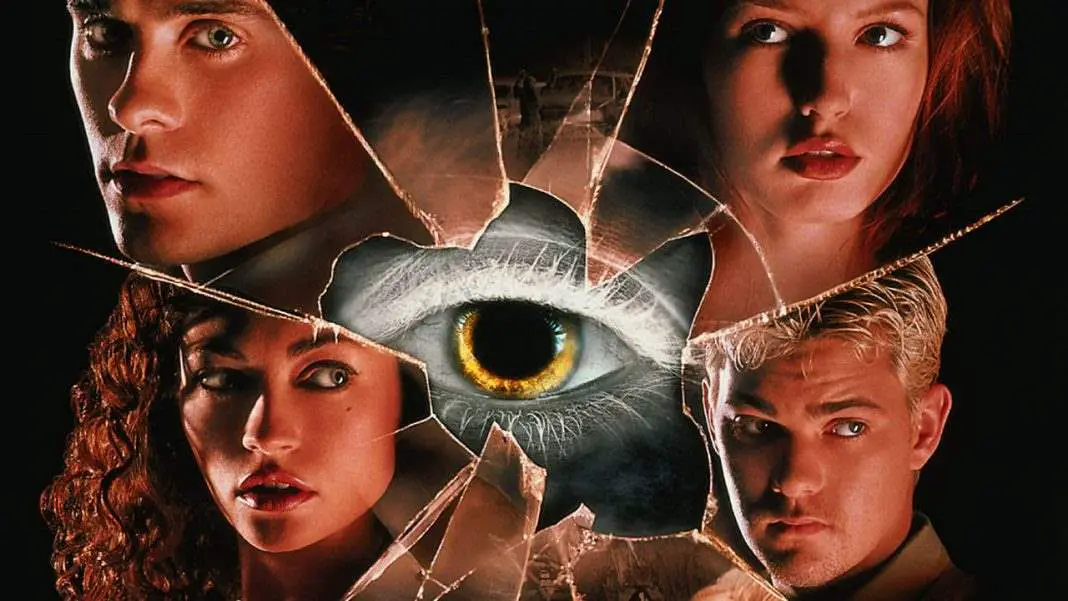Nearly every major religion has a belief system based on good and bad, and each of those religions has a malevolent figure who rules over the bad. The Christian-based faith groups have Satan…The Devil…Lucifer. He goes by many names, and he takes on many different forms, but there are certain inalterable facts: he presides over Hell, offering only eternal torment to the souls under his authority. However, it has also been said that he can offer you untold pleasures in life, and it will only cost you your soul. It’s the ultimate Buy-Now-Pay-Later scam—the credit card of the damned.
The first known recorded story of someone selling their soul to the devil is that of Theophilus, a sixth century cleric who made a deal with Satan to, strangely, rise through the ranks of the church. He signed a contract in his own blood, renounced God, and was promoted to bishop. After later regretting his actions, Theophilus prayed to the Virgin Mary and fasted until she appeared to him. She agreed to convince God to forgive him and reclaim his soul. After burning the contract, Theophilus died from joy, and his soul presumably went to heaven.
Theophilus was an actual historical figure but the myth was a fictional creation attributed to him after the fact—though it’s not precisely known when. But as you can see, the selling of one’s soul dates back thousands of years, with many people willing to deal with eternal damnation later in order to reap the benefits today.
Likely the most famous story of someone selling their soul to the devil, though, is that of Faust—a successful but ultimately bored scholar who is never satisfied with the vast amount of knowledge and experience that he has. Hungry for more, he calls out to the devil who appears with a deal for him: limitless knowledge and carnal delights in exchange for his soul.
The first known recording of the Faust legend was a chapbook printed in 1587 by an unknown author, but it was quickly appropriated by other publications. Since then, it has been retold and revamped many times over—most notably in the Christopher Marlowe play The Tragical History of Doctor Faustus (1604), and Goethe’s two-part reimagining of it just over 200 years later. Aside from stage (and later, screen) adaptations, many a composer got into the mix, including Beethoven, Schubert, Schumann, and Liszt. In some renditions of the legend, Faust is able to redeem himself and save his soul, but typically he is damned from the start and dragged kicking and screaming into hell.Possible inspirations for the character of Faust are Simon Magus, a gnostic who earns mention in the Bible; Johann Fust, a printer who was accused of witchcraft in the 15th century for, ironically, publishing the Bible; Dr. Johann Georg Faust, an alchemist and magician during the German Renaissance; and likely many others.
Faust wasn’t the only fictional fellow to sell his soul to the devil. In the short story The Devil and Daniel Webster by Stephen Vincent Benet (first published in 1936), farmer Jabez Stone is famously given seven years of prosperity in exchange for his soul. When Jabez wants to back out of the deal, he calls in Daniel Webster to defend him in an unprecedented legal battle. Though the jury was comprised of damned souls (Blackbeard the pirate among them), they ruled in favor of Jabez, and he was allowed to hold onto his life and his soul.
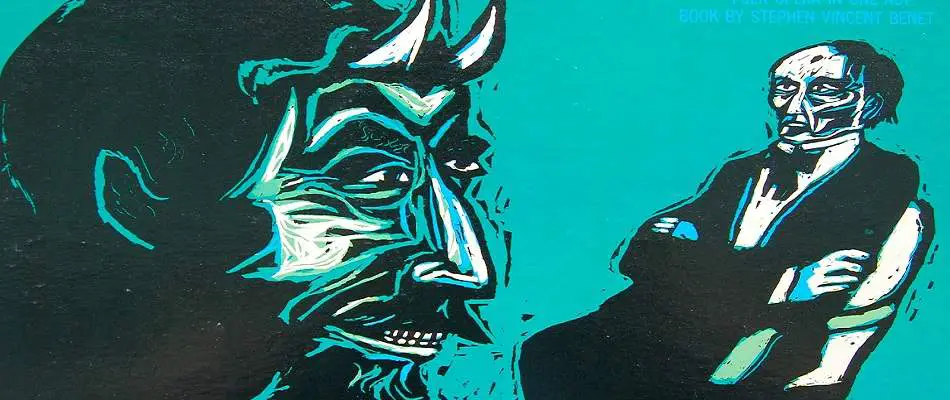 Aside from these fictional accounts, there are other real world “examples” of Satanic soul pacts to be found. The so-called Devil’s Bridges found mostly in Europe were built during medieval times and remain such an architectural achievement that local legends dictate that they could only have been built by the devil himself in exchange for a soul, often the first to cross it after its completion. In these myths, the devil is typically outsmarted by the townsfolk who coax a goat or other animal across the bridge before a human dares to cross.
Aside from these fictional accounts, there are other real world “examples” of Satanic soul pacts to be found. The so-called Devil’s Bridges found mostly in Europe were built during medieval times and remain such an architectural achievement that local legends dictate that they could only have been built by the devil himself in exchange for a soul, often the first to cross it after its completion. In these myths, the devil is typically outsmarted by the townsfolk who coax a goat or other animal across the bridge before a human dares to cross.
During the witch trials, those who were accused of witchcraft were supposed to have sold their soul to the devil—in some instances, written contracts were even presented as evidence. This was the case with Urbain Grandier, a seventeenth century priest who was burned at the stake for summoning demons that possessed a convent of nuns (which would make a fascinating horror film, if nothing else).
Most often, it is a public performer who is supposedly guilty of this transgression. Violinist Giuseppe Tartini had a dream in 1712 wherein he sold his soul to the devil, and the devil took his instrument and played the greatest song that Tartini had ever heard. Upon awakening, he went directly to his violin to reconstruct the song—his most famous—commonly referred to as “Devil’s Trill Sonata”. Because of its great technical difficulty (another legend of the day stated that Tartini had to have six fingers in order to play it), some have alleged that his encounter with the devil was not just a dream after all. Similarly, Niccolò Paganini was the most revered violinist in the 1800s, whose skill was so immense that it was rumored he had sold his soul to the devil in exchange for his musical talent.
In the late 1920s, blues musician Tommy Johnson began making waves with his recordings. He adopted something of a sinister stage persona, and spread the rumor that he had sold his soul to the devil for his musical skill, a fictionalized version of which can be seen in the 2000 film O Brother, Where Art Thou. Although Tommy Johnson’s tale predates it, the similar story of another blues musician, Robert Johnson (no relation), is much more widely distributed.
 Robert Johnson, who was wildly talented and influential to later generations of performers, did not see a lot of success in his lifetime. Nevertheless, rumors abounded that he traded his soul for a skill set that seemingly appeared out of nowhere. The legend states that he wasn’t a particularly adept musician until he took his guitar to a crossroads where he met the devil disguised as a man. The devil tuned the guitar for Johnson and returned it to him, a gesture symbolic of them sealing the deal.
Robert Johnson, who was wildly talented and influential to later generations of performers, did not see a lot of success in his lifetime. Nevertheless, rumors abounded that he traded his soul for a skill set that seemingly appeared out of nowhere. The legend states that he wasn’t a particularly adept musician until he took his guitar to a crossroads where he met the devil disguised as a man. The devil tuned the guitar for Johnson and returned it to him, a gesture symbolic of them sealing the deal.
Devilish imagery was commonplace in the blues, and Robert Johnson made use of this in songs like “Me and the Devil Blues” and “Hellhound on my Trail”, but it’s his recording of “Crossroad Blues” that is most identified with the legend, though the lyrics don’t specifically reference it. Multiple cities in the south lay claim to being home of the location where the transaction occurred, and two of them—Clarksdale and Memphis—have even erected tourist attractions in the supposed spots to commemorate the event.
The supernatural elements of crossroads have long been recorded, as they are said to be something of “thin spots” in reality, existing as locations between different worlds. Greek and Roman gods like Mercury and Odin are thought to have been honored at crossroads; there is a history of burying outlaws and suicides there, as well, outside the normal realm. In voodoo and similar religions, a character known as Papa Legba rules over the crossroads between worlds, and some believe it was Legba that Robert Johnson made his deal with.
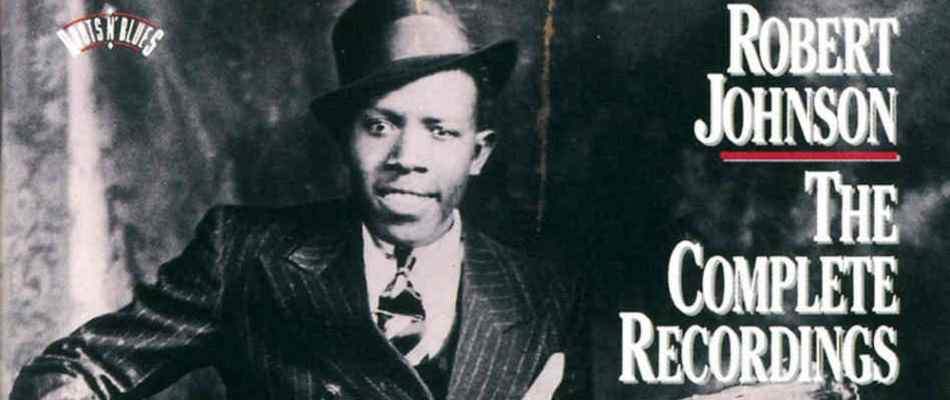 Had either Tommy or Robert Johnson hailed from Ireland, it’s possible that their pact would have been made with the Lenan Sidhe rather than Satan. Lenan Sidhe is related to the Greek notion of the muse, in that she would inspire artists to create great works that they otherwise would not be capable of, but she came with a dark twist. She doesn’t run off with the artist’s soul, but she does run off with their lives. They burn so brightly and intently that they burn out early and die young, the price they pay for such a divine (or infernal) gift. Parallels are easily drawn between these myths and those concerning soul pacts with the devil.
Had either Tommy or Robert Johnson hailed from Ireland, it’s possible that their pact would have been made with the Lenan Sidhe rather than Satan. Lenan Sidhe is related to the Greek notion of the muse, in that she would inspire artists to create great works that they otherwise would not be capable of, but she came with a dark twist. She doesn’t run off with the artist’s soul, but she does run off with their lives. They burn so brightly and intently that they burn out early and die young, the price they pay for such a divine (or infernal) gift. Parallels are easily drawn between these myths and those concerning soul pacts with the devil.
In more contemporary times, famous illusionist David Copperfield has been rumored to have sold his soul in order to accomplish his seemingly-impossible tricks. However, a quick search will show similar results for Bob Dylan, Jay-Z, Kanye West, and John Lennon. With the rise of the Internet, and conspiracy forums scattered all about the web, nearly every celebrity that you can think of has been accused of selling their soul to the devil by someone, somewhere. Some may even willfully incorporate these old legends into their self-created mythology, such as the case with comedy-rock group Tenacious D.
It’s impossible to say how many people ever truly believed these stories, and how many simply viewed them as the folklore that they are. Modern technology has since inundated us with so many “cases” of Satanic soul pacts that nobody even pays attention anymore. What used to be relatively rare and fun has turned tiresome and prolific, as folklore has evolved into promotional material and paranoid hate-speech.
It’s difficult to take any of these newer examples seriously, either as an actual theory or as a bit of campfire fun. Who would willingly give up their soul for fame and fortune in an age where releasing a sex tape can achieve the exact same thing? I, for one, long for the old days of secret meetings at the crossroads and whispered rumors from across the bar. I might even be willing to sell something of value to get them back…
